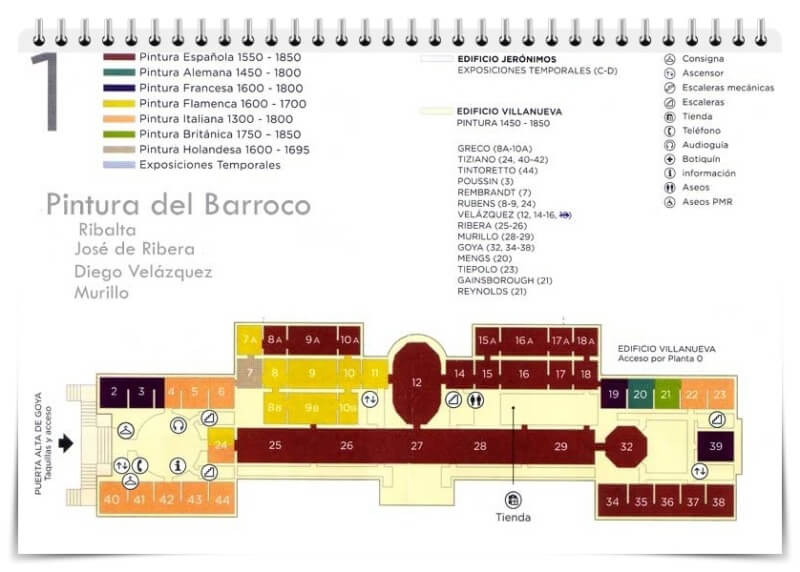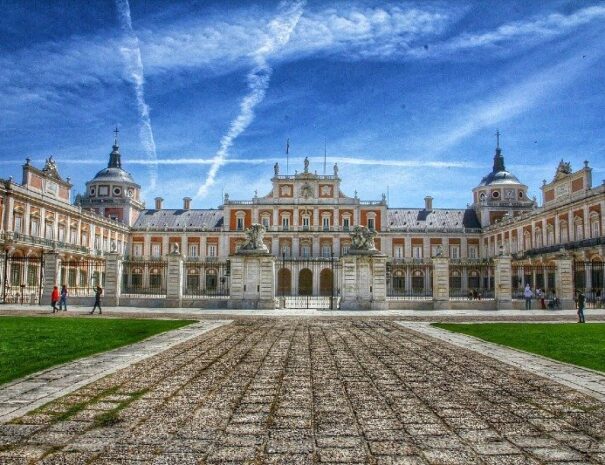
The Best Flamenco Shows in Madrid
Looking for the best Flamenco Shows in Madrid? Here you will find local insights with the best tablaos, shows and special offers … Read More
The Museo Del Prado is one of the main tourist sites of the city of Madrid and you should not pass it up. You can see masterpieces of the Spanish, Italian, and Flemish schools.
Depending on the time you have to visit the Museo del Prado, 15, 30 and 50 paintings have been selected that go through the name of some of the most famous painters, exceptional silversmith pieces and statues. Get ready for this superb experience, probably Madrid´s top thing to do for culture lovers.
Before beginning your visit, you should start by marking the rooms on one of the free maps that are given to you at the entrance to avoid getting lost and make the most of the experience without going around and around in circles. You can also rent an audio guide and click on each number section 1/2/3 hours in the museum.

The Museo del Prado is one of the richest and most important museums in the world, containing some 3,000 paintings. The Prado is recognized as the most important of the art galleries in Spain and amongst the 3 to 5 more important art museums in the world.
The gallery’s main treasure consists of its collection of paintings of the Spanish School, whose development stretches from the 15C to Goya.
The museum was built in 1785 under Charles III in classical style by famous architect Juan de Villanueva; originally intended as a natural history museum. The original ambition was to make this part of Madrid a dedicated area for sciences, with the Botanical gardens right next to the Prado as part of this.
But plans changed and the building was devoted to art. Fortunately, the botanical gardens remain where next to it and are a great visit to be enjoyed right after or before a visit to the Prado museum.
Granite and brick were the building materials used for the building. Construction was completed in 1819 under King Ferdinand VII, and it was then that it became a museum of painting
The Prado is home to some of Spain´s most important painters. Names include Jose Ribera with about 60 paintings. El Greco with 34 (large religious canvases).
The Prado has about 50 works by Diego Velázquez, including such famous paintings:
There are also numerous paintings by Murillo, including La Immaculada Concepción de Soult in Room XXVIII.
The Prado has about 120 paintings by Goya, the best of his portraits being found here, including the Maja Vestida, the Maja Desnuda, and the Family of Charles IV. Goya’s well-known tapestry designs are housed also at the Prado and you will also find here the famous painting Tres de Mayo 1808 (Shoot-
g of Insurgents). The Pinturas Negras (black paintings) are well-represented with an extensive collection of drawings by the artist.
From the Italian School of the 15C, there are paintings by Fra Angélico (Annunciation), by Mantegna (Death of the Virgin), and by Antonello da Messina (Body of Christ). There are 8 paintings by Raphael, including the Madonna with the Fish and a portrait of a cardinal.
The Venetian School is represented by Giorgione, Tintoretto, Paolo Veronese and both Tiepolos. There are about 40 paintings by Titian, including the equestrian portrait of Charles V, the portraits of Charles V and Philip II, Venus, and Adonis and Danae.
The early Dutch School is represented too and paintings include Bosch’s most famous work, the triptych The Garden of Delights.
The German School is represented by Albrecht Dürer’s famous works: Self-portrait, Adam and Eve, Portrait of an Unknown, Man, and also by the paintings of Lucas Cranach and Hans Baldung.
The Flemish School is represented by 86 paintings, including the work of Rubens, for example, such beautiful later works as the Three Graces and the Garden of Love and Peasant Dance.
Of the 20 paintings by Anton van Dyke two of his most beautiful, Arrest of Christ and The Brazen Serpent are at the Prado. Jakob Jordaen’s Family Portrait is one of the artist’s best works. Jan Breughel is also represented by several works.
The Prado has one of Rembrandt‘s best-known pictures, Queen Artemisia.
The French School of the 17&18C is represented by paintings of Nicolas Poussin, Claude Lorrain, J.A. Watteau, and others.
Representing the English School are paintings by Thomas Lawrence, Gainsborough, Henry Raeburn, and George Romney.
There is also a collection of Egyptian, Greek, and Roman sculptures, as well as a collection of jewelry and objets d’art, the Tresoro del Delfín.
You can find below more ideas to spend your getaway in Madrid. If you are interested in art we also recommend you this guide with Spain´s top art museums.

Looking for the best Flamenco Shows in Madrid? Here you will find local insights with the best tablaos, shows and special offers … Read More

Check out our complete visitors guide to the Royal Palace of Aranjuez and it lush gardens. This spectacular estate is just a short drive from Madrid. … Read More

Located at the heart of the Paseo del Prado, almost in front of the Neptune Fountain, the Thyssen-Bornemisza museum shares the limelight with two of the other art museums in Madrid: the Prado Museum and the Reina Sofía museum.
Since these three museums are located very close to each other, this area of Madrid has become popularly known as the Triangle of Art. … Read More

Check out our full guide to the Puerta del Sol in Madrid, one of the “must see” sights in the city and the geographic center of Spain. … Read More
is proudly powered by WordPress